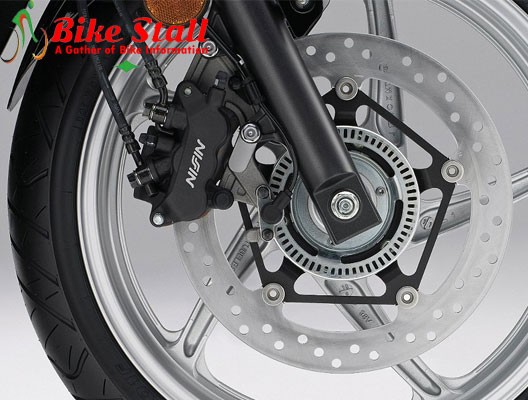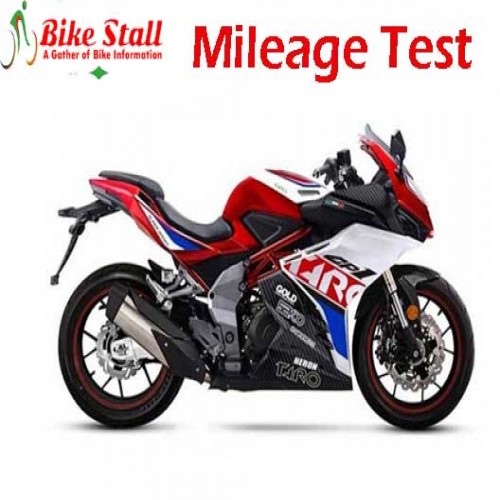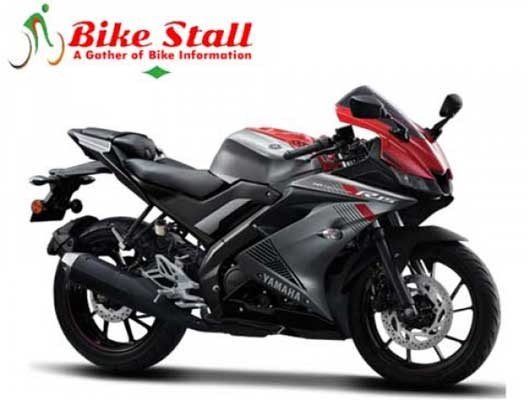What is motorcycle ABS & how does it work?

What is ABS in a Motorcycle?
ABS stands for Anti-lock Braking System, which is a safety feature that is commonly found in modern motorcycles. ABS is designed to prevent the wheels from locking up and skidding during hard braking, which can cause the motorcycle to lose stability and control.
When a rider applies the brakes on a motorcycle equipped with ABS, the system uses sensors to detect when the wheels are about to lock up. It then automatically adjusts the braking pressure to each wheel, reducing the likelihood of a skid and helping the rider maintain control of the motorcycle.
ABS can be especially helpful in wet or slippery road conditions, where braking distances can be longer and the risk of skidding is higher. Many modern motorcycles come with ABS as a standard feature, and it is highly recommended for riders who want to prioritize safety on the road.
How does ABS Work?
The Anti-lock Braking System (ABS) in a motorcycle works by using sensors to detect when a wheel is about to lock up during hard braking. When the system detects a potential lock-up, it automatically adjusts the braking pressure to that wheel to prevent it from locking up and causing the motorcycle to skid.
The basic components of an ABS system in a motorcycle include the brake lever or pedal, wheel speed sensors, hydraulic modulator, and control unit. When the rider applies the brakes, the wheel speed sensors on each wheel send signals to the control unit, which analyzes the data to determine if a wheel is about to lock up.
If the control unit determines that a wheel is about to lock up, it sends a signal to the hydraulic modulator to reduce the hydraulic pressure to that wheel. This reduces the braking force and prevents the wheel from locking up, allowing the rider to maintain control of the motorcycle.
The ABS system works very quickly and can adjust the braking pressure to each wheel several times per second. This helps the rider to maintain stability and control during hard braking, even on slippery or uneven surfaces.
The pros and cons of ABS
Here are some pros and cons of motorcycle ABS:
Pros:
1. Increased safety: ABS is designed to prevent the wheels from locking up during hard braking, which can help prevent skids and maintain control of the motorcycle. This can increase safety and help prevent accidents.
2. Improved braking performance: ABS can help improve braking performance by allowing the rider to brake harder and stop more quickly without the risk of skidding.
3. Reduced stopping distance: ABS can help reduce the stopping distance of the motorcycle, giving the rider more time to react to potential hazards and avoid accidents.
4. Increased confidence: With ABS, riders can brake more confidently, knowing that the system will help prevent skids and maintain control of the motorcycle.
5. Suitable for all riders: ABS can benefit all riders, regardless of skill level or experience. Even experienced riders can benefit from ABS in emergency situations, where the risk of skidding is higher.
6. Better performance in adverse weather conditions: ABS can be especially helpful in wet or slippery road conditions, where the risk of skidding is higher. ABS can help the rider maintain control and avoid accidents in these conditions.
Cons:
1. Cost: Motorcycles with ABS tend to be more expensive than those without it, which can be a disadvantage for riders on a tight budget.
2. Weight: ABS adds weight to the motorcycle, which can affect handling and acceleration.
3. Maintenance: ABS systems require regular maintenance to ensure that they are functioning properly, which can be a hassle for some riders.
4. Complexity: ABS systems are complex and can be difficult to diagnose and repair if something goes wrong, which can lead to higher repair costs.
Overall, the advantages of motorcycle ABS outweigh the disadvantages, as it is a safety feature that can help prevent accidents and save lives. However, the cost and maintenance requirements of ABS may be a consideration for some riders.



